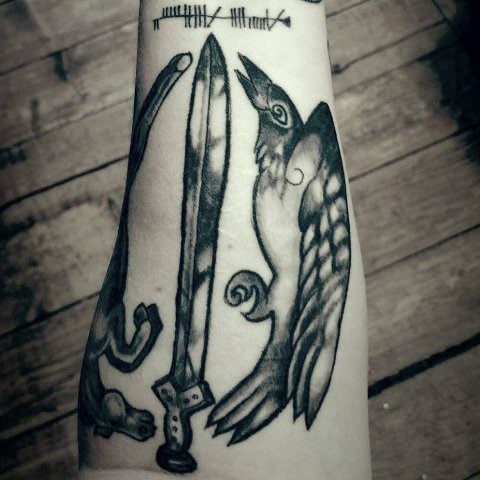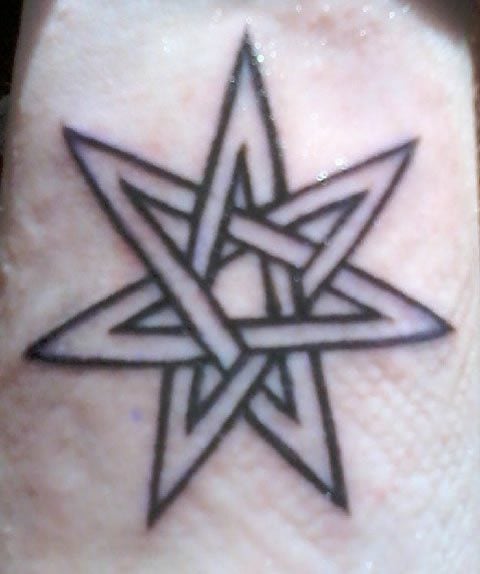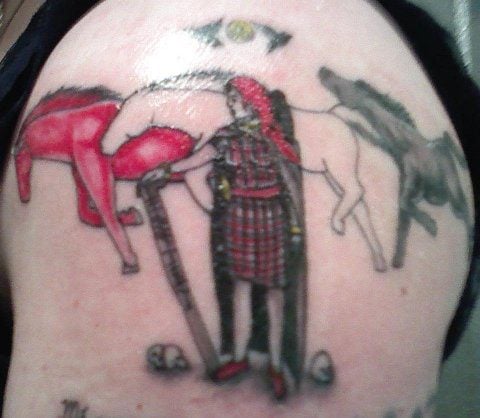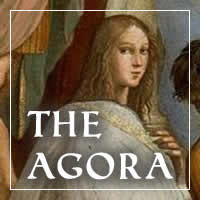I am, fairly obviously, not any kind of Christian but I have read the Bible–more than once and in more than one language actually–and one of my favorite quotes is the bit about how our bodies are temples. Of course ,in the original context it means temples to a specific Power, but I like the imagery of ourselves, our physical forms, as temples of our Gods, places devoted to worship of the Gods. I find it a very beautiful image, and without a doubt, the appeal of this image to me, of the idea of our physical forms as sacred in honoring our Gods, has led me to see tattooing as a way we as modern pagans can both reinforce our connection to the Powers we worship and also decorate our temples.

There is, so far, no concrete evidence of the ancient Irish using tattooing but there is evidence of tattooing in similar cultures, including the Picts which made me want to explore the concept of tattooing in the ancient world, specifically in Europe* where tattooing has a long history. The earliest tattoo work known in Europe was found on a frozen body located between Italy and Austria, dubbed the “Ice Man” because of the method which preserved him. He was estimated to be over 5,000 years old, dating back to approximately 3000 BCE (Lineberry, 2007). Tattooed patterns were found on the lower back, knee, and ankle of his body, all areas which showed signs of degeneration, leading researchers to conclude the tattoos were likely intended to be therapeutic (Lineberry, 2007). Tattooing was also believed to have been used later among the Scythian and Pictish cultures. Preserved Scythian bodies of both genders dating as far back as 2400 BCE have been found bearing tattoos of animals and mythic images, some extremely elaborate (Lineberry, 2007). The stylized images seen in the Scythian tattoos are identical to those seen in other Scythain artwork, indicating that the tattoos reflected larger social concepts and symbols (Kromarik, 2003). In the case of the Picts less is known with certainty because no preserved bodies have been found, however written sources from outside observers indicate that Pictish tattoos were a symbol of status and that they included images of animals (Lineberry, 2007).
Herodian, writing around 200 CE says that the Celts “draw figures of animals or symbols on their skin by pressing hot iron onto their limbs, causing great pain, and over this they rub the sap of a plant”. (Green, 2012). While this account is questionable because the writer never traveled to any of the Celtic lands and was likely repeating another person’s experience there are other Roman sources that mention the use of iron implements to create permanent marks, which means this type of scarification was either a widespread belief by the Romans or may have been the actual practice. As late as 600 CE a Christian bishop noted the practice of tattooing among the Picts, mentioning a process similar to that cited by Herodian, except pricking was used in place of hot iron (Green, 2012).

The true meaning behind ancient tattoos in many of these cultures will never be known, but we do know that tattooing was a common practice among some ancient European cultures and that there was a pattern to the symbols and images used. The evidence also supports the theory that these tattoos, particularly among the Picts and Scythians, were more than mere decoration. I am comfortable with my own view of the sacredness of tattooing and working from that view have incorporated sacred tattooing into my spiritual practice. To me, tattooing is the way that I decorate the temple that is my body. It marks this flesh as sacred to the Gods and spirits I am devoted to and is a constant reminder to me that there is only a separation between us and the sacred if we allow there to be one. I take inspiration from what I’ve learned of the ancient pagan practices, using animal imagery and older Irish symbols and artwork styles, but I also incorporate modern inspiration. I have the symbol and motto of my Druid Order tattooed on my wrist, as a mark of the rank I achieved through that group. I also have three snakes tattooed around my wrist, inspired by a work of fiction’s claims that Druids had similar tattoos and as a tribute to a near death experience I went through.
The process of being tattooed has spiritual implications as well, as an experience which is a physical ordeal to be endured. Although I may have joked when people ask me if tattoos hurt that they feel like unicorn kisses** the truth is obviously yes they do hurt. The process of puncturing the skin and inserting ink into it is inherently painful, and from a spiritual perspective this is a good thing. Easy, temporary marks can be achieved with henna or other similar things, but to have a permanent mark, something that you will carry forever literally in your body, its worth the pain and blood involved. I have often approached the experience itself as an offering to the gods and spirits, believing that as the tattoos are meant to mark major events and transitions in life the act of getting the tattoo should also be a rite of passage as well.

I got my first tattoo shortly after turning 18 and it was meant to be both a sacred symbol and a sacred act. I have since gone on to add many more tattoos, and each is layered with meaning. The designs and symbols on my body tell a story, of my faith, of the Gods I serve, of the powerful experiences of my life. Tattoos are not for everyone, and that’s fine, but for some of us they are highly significant and spiritually symbolic, whether they are copies of ancient designs, like the spirals from Brugh na Boyne, or whether they are inspired by works of fiction that touched a person in a profound way, like the forehead crescent from Mists of Avalon. Our bodies, ultimately, can be seen as the most constant place of our worship, the central location that we honor spirit from, and for some of us tattooing is a way to sanctify, bless, and acknowledge that space and the Gods and spirits who are served from it.
* I chose to focus on Europe because my own practice is primarily Irish focused and simply for brevity’s sake, as an entire book could be written (and many have been) on tattooing around the world.
** who knows, maybe the unicorns have fangs and take pieces out of you when kissing.
References:
- Lineberry, C., (2007). Tattoos. Retrieved from http://www.smithsonianmag.com/history-archaeology/tattoo.html
- Kromarik, K., (2003). History of Tattooing. Retrieved from https://www.msu.edu/~krcmari1/individual/history.html
- Green, T., (2012). Ancient Celtic Tattooing. Retrived from http://www.tattoosymbol.com/celtic/ancient_celtic.html

Patheos Pagan on Facebook.

the Agora on Facebook
Irish-American Witchcraft is published on the first and third Tuesday of a month. Subscribe via RSS or e-mail!
Please use the links to the right to keep on top of activities here on the Agora as well as across the entire Patheos Pagan channel.

















